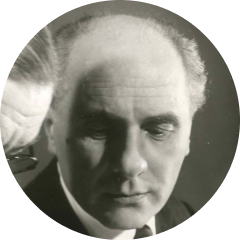George M. Hoellering
(1898–1980)
George M. Hoellering (1898–1980), Austrian-born Catholic and film-maker (his father founded Vienna’s Tonkunstler Orchestra and also owned five of the city’s theatres) who journeyed to London in 1936 and was to become managing director of the Academy Cinema, London – the UK’s premier cinema – for thirty-six years from 1944 (he was the first exhibitor to run three cinemas in one building by adding Academy Cinemas 2 and 3 to the original cinema in 1961). Early in his career, he made two feature films: Kuhle Wampe (Germany, 1931–2), from a script by Bertolt Brecht (who collaborated in the shooting of the film) and Ernst Ottwalt – an account of working-class Germans during the Depression that was scorned by the Nazis – and Hortobagy (Hungary, 1934–5), a documentary about the lives of the csikós or herdsmen of the great plain of Hungary and their families and women-folk from the surrounding villages. (He had moved from Berlin to Hungary when Hitler came to power.) At the Academy Cinema, he was to introduce British audiences to the work of such directors as Satyajit Ray, Ingmar Bergman and Miklós Jancsó. From 1967 to 1971 he was a Governor of the British Film Institute, where he took a particular interest in the development of the Regional Film Theatre movement and gave considerable support to the extension of the National Film Theatre and the opening of its second auditorium in 1970. See too Roger Elliot, ‘Teaching the English to like foreign films’, Illustrated London News, 22 Jan. 1966. 32–3. Hoellering was to work towards producing and directing the film of Murder in the Cathedral throughout the 1940s: the film finally went on general release in Feb. 1952.
